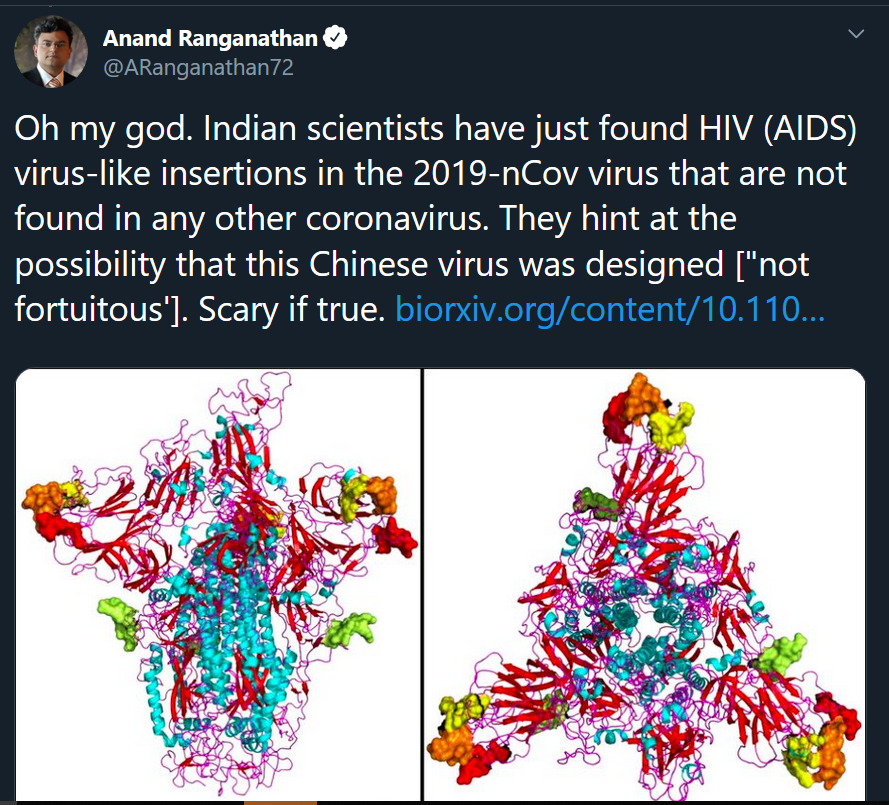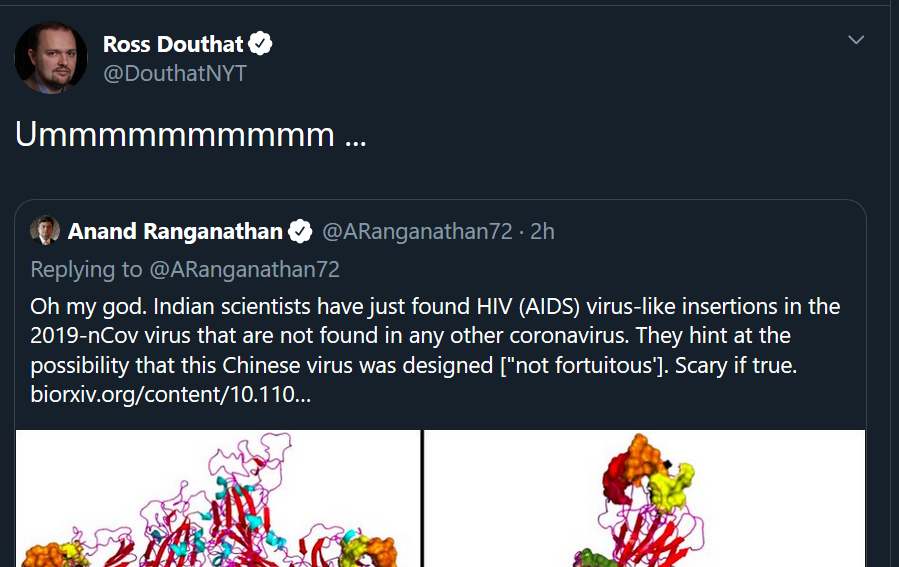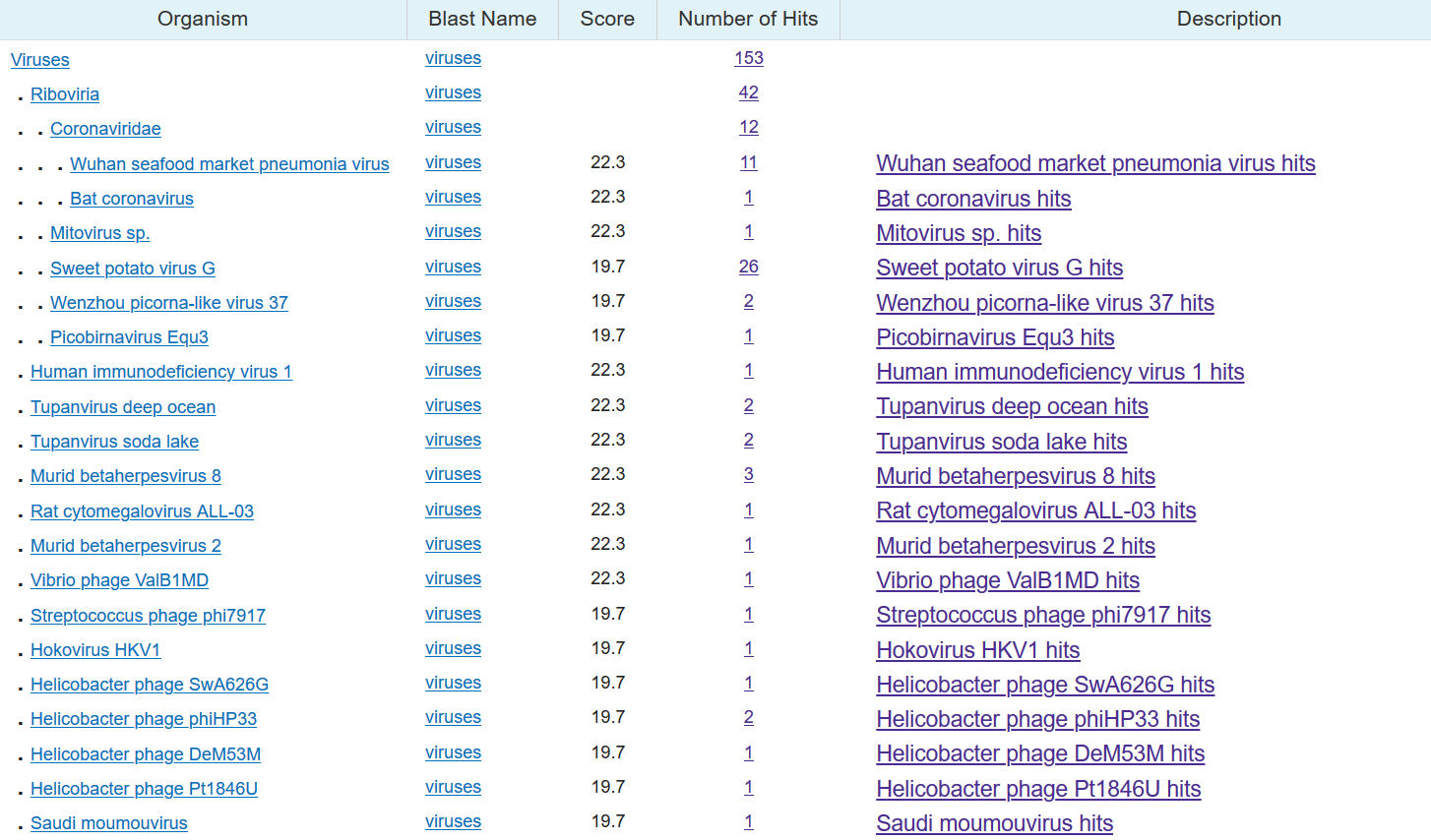Don't believe the conspiracy theories you hear about coronavirus and HIV
Especially if you work for the New York Times
By Mimi Thian on Unsplash
The new coronavirus is scary, and lots of information is flying around in the pandemic. But please, don't believe everything you read, even if it came from scientists. Before panicking about news, wait for real, actual confirmation (and peer review) from scientists outside of a Twitter scrum.
Case in point, today a group of scientists based in India took the genome sequences of 2019-nCoV, the novel coronavirus, did some armchair analysis (literally, all the work they did could be done from a desk in about an hour) which they shared in a pre-print (i.e. this hasn't gone through peer-review by other scientists yet), and found that it had similarities to the genome of...HIV.
Update, February 2nd: The paper has been withdrawn, following widespread criticism, like the kind below.
If you're a soup-brained Twitter user like me, you might have seen this sensational, zombie movie-ass tweet about the pre-print by Anand Ranganathan, a molecular biologist and author with 200k+ followers:

No, I'm not linking to it.
This prompted a blizzard of apocalyptic world building in the mentions, including a boost from prominent not-a-biologist New York Times opinion columnist Ross Douthat, who has about 160k followers:

Thanks Ross, good input.
The gist of the story is this: the coronavirus (2019-nCoV) appears to have four additions to its genome that similar viruses, like SARS and MERS, are lacking. These additions are either identical or extremely similar to parts of the HIV genome. The authors go on to speculate that this may be why the coronavirus is spreading so quickly, and also that something sinister may be afoot:
"This uncanny similarity of novel inserts in [Wuhan coronavirus] to [HIV] is unlikely to be fortuitous."
They don't elaborate on what that means, but the Twitter interpretation is that someone engineered coronavirus with parts of HIV, to make it...I don't know. Infect better? It's unclear.
I double checked whether it was true that HIV and coronavirus have similarities. I took the four additional sequences (the "novel inserts") they found in the coronavirus genome and I looked to see if, as they said, it was similar to HIV. The truth is while these sequences do pop up in HIV, they also pop up in tons of other viruses. There's no reason to immediately suspect a nefarious fusion of HIV and coronavirus.
Sequence one out of four is indeed found in both coronavirus and HIV. The same sequence also appears in a virus that infects Streptococcus (spherical bacteria), a rat virus, and an "acute bee paralysis virus."

A list of viruses that contain 100% matches of sequence one from Wuhan coronavirus, which includes the coronavirus, HIV...and also a bunch of other viruses.
Dan Samorodnitsky
I did the same analysis on sequence two. Once again, HIV and the coronavirus appear together, but also a mouse herpes virus, a rat cytomegalovirus (the virus that causes mononucleosis, popularly known as mono or the 'kissing disease'), and a virus that infects sweet potatoes.

The stories for the other two sequences are the same. Those sequences appear in benign viruses like Peach-associated luteovirus (a plant virus), Bovine papillomavirus type 9 (the cow version of HPV), and Leptopilina boulardi Toti-like virus (a virus that infects wasps).
So the facts are that the new coronavirus may have some new additions to it, but they're common bits and pieces found in tons of viruses — not just HIV — and there's no proof that they even have anything to do with how the coronavirus behaves.
And there's definitely no proof that they were put there on purpose.





















